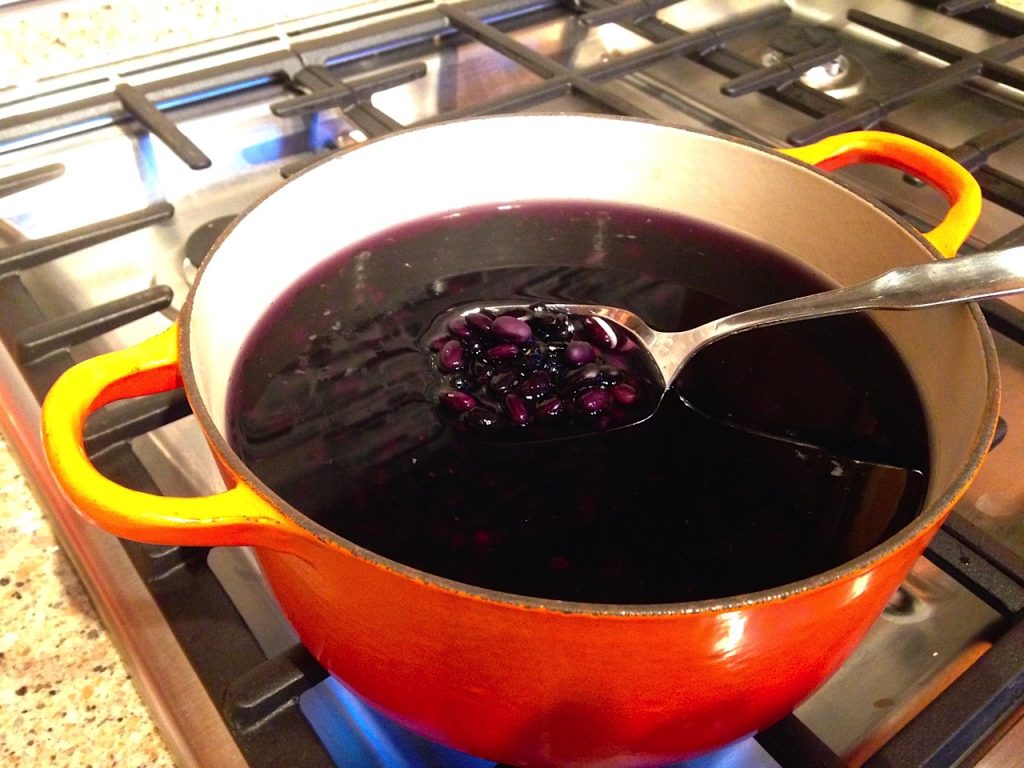Beans are actually seeds from flowering plants in the Fabaceae family. These seeds are classified as legumes. The health benefits of legumes, which most of us know as beans, peas, or lentils, are that they are high in fiber, amino acids (which are the chemicals that combine to create protein), folate (Vitamin B9), zinc, iron, and magnesium.
The health benefits of this type of plant-based food are many. When beans are rich in color, then they are high in antioxidants as well, because the antioxidants are in the color pigment. Black beans have the highest amount of antioxidants. Beans have also been shown to reduce the risk of cancer. Beans can also help stabilize blood glucose levels, because of the high fiber content, which makes them a great food for diabetics. In addition to those postivie health benefits, “people who consume beans may be less likely to die of a heart attack, stroke, or other cardiovascular health problem.” They have also been shown to help lower cholesterol levels naturally.
Beans are highly nutritious when prepared properly. This recipe is vegan and gluten-free. Always buy certified organic, non-GMO beans for the most nutrition and health benefits.
Beans are inexpensive and easy to store. Store uncooked, raw beans in a dark, cool, dry place. Beans are easy to freeze and thaw, so make a large batch and freeze some in small glass freezer to oven containers to use later. Beans are one of my favorite things to add to salads, a stir-fry, or have as a side dish with soup or bread.
Note that one pound of dried beans will yield about 5–6 cups cooked beans.
The optional seaweed in this recipe adds nutrients and helps make beans more digestible.
Ingredients:
1 lb. dried beans (any variety)
Pure water, plus more for soaking and cooking
1 tsp. pure coconut oil
2-inch piece seaweed (optional)
unrefined sea salt to taste
Directions:
- Check beans and discard any that are shriveled or discolored. Also, make sure there are no little stones or foreign matter mixed in with the beans.
- Sprout the beans, so they are more digestible. Beans have phytic acid that prevents them from being digested easily. Sprouting the beans makes them more nutritious as well as easier to digest.
Soak beans overnight or for a couple of days (depending on size of bean. Large beans need to soak at least 2 or 3 days to sprout.) in pure water. Make sure the dish is large enough for beans to double or triple in size and can hold enough water to cover them by at least two inches. Check them each day and add more water as needed. When you see a tiny split or sprout, they are ready to cook.
- Discard the water the beans were sprouted in.
- Put the sprouted beans in a large pot and fill with enough new, purified water to cover the beans by about two Add salt, coconut oil and seaweed, if using. Bring water to a boil.
- Reduce heat to a simmer, and cook beans until tender, 45 minutes to an hour, depending on the size of beans. Larger beans will take longer. Add more water if it gets too low and the tops of beans are showing.
- Remove from heat and they are ready to eat.
Variation: Add a little extra virgin, pure coconut oil for additional richness.
By Nancy Addison
Nancy’s website is www.organichealthylife.com
If you would like more easy, healthy recipes, you can find them in “How To Be A Healthy Vegetarian,” 2nd edition, Page 250, by Nancy Addison. It won Best Specialty Cookbook of the Year, 2017-2018, in the Book Excellence Awards.
copyright@Nancyaddison2015


